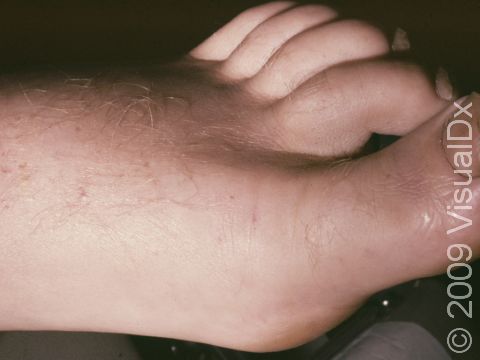Snakebite, First Aid
There are 2 kinds of snakebites: poisonous (venomous) and nonpoisonous (nonvenomous). Most snakes are nonpoisonous, and bites from such snakes can be treated as puncture wounds. First aid for puncture wounds can be found in the Wound text. Poisonous snakebites are much less common but much more dangerous, and they can even be deadly.
First Aid Guide
Any time a person has been bitten by a confirmed or suspected poisonous snake, the injury should be treated as a medical emergency. While awaiting emergency medical care, there are first aid measures that should be taken.
- Call emergency medical services.
- If possible, let the emergency operator know what kind of snake caused the bite. Note: Do not attempt to catch or kill the snake. Poisonous snakes can bite reflexively even after they are dead.
- Check the person’s airway, breathing, and circulation. If the person is having breathing problems, allow him/her to get in the position that is most naturally comfortable to breathe.
- Wash the bite with soap and water.
- As swelling may occur from the bite, remove any constrictive clothing or jewelry near the injury site.
- To slow the spread of venom, place the site of the bite lower than the level of the person’s heart. Keep it there and keep the person as still as possible.
- If signs of shock occur, such as decreased alertness or the person becomes very pale, lay him/her flat, raise the feet 8–12 inches, and cover the person with a light blanket or coat. Be sure to not elevate the bite area, so if the bite has occurred on the feet or legs, this is not recommended.
The following should NOT be done after a snake bite has occurred:
- Do not attempt to remove snake venom by sucking it or cutting it out.
- Do not apply ice or a cold compress to a snake bite.
- Do not apply a tourniquet.
- Do not raise the site of the bite above the person’s heart.
Who's At Risk?
Snakes typically avoid people and bite only when they feel threatened or surprised. Therefore, to reduce your risk of being bitten by a snake, avoid picking them up or playing with them.
Those who live in areas that are known to have poisonous snakes are at an increased risk for snakebites. If living in such an area, it is suggested to carry a snakebite kit and become familiar with how to use it.
Signs & Symptoms
Fang or bite marks may or may not be visible after a snakebite has occurred. The site will often be painful and may change color and begin to swell.
As a general rule, most poisonous snakes have slit-like pupils, a triangular head, and clearly visible fangs. Common poisonous snakes are pit vipers (rattlesnakes, water moccasins, and copperheads) and coral snakes. They can be identified by the following features:
- Rattlesnake – There are rings at the end of the snakes’ tail that produce a rattling sound when they shake their tail.
- Water moccasin – These snakes have a white, cotton-like lining in their mouths, which they display when alarmed.
- Copperhead – These snakes have diamond-shaped markings down their backs. They rapidly move their tails when they’re angry but do not have rattles.
- Coral snakes – These snakes have red, yellow, and black rings along the entire length of their bodies. Coral snakes, unlike many other poisonous snakes, have round pupils and small fangs that may or may not be visible.
Note: Coral snakes are often confused with some nonpoisonous snakes, such as the milk snake or king snake. In the US, there is a rule of thumb for differentiating between the poisonous coral snake and its nonpoisonous look-a-likes: nonpoisonous snakes have red and yellow bands separated by a black band, whereas coral snakes have red and yellow bands that touch. The adage, “Red on yellow, kill a fellow; red on black, venom lack,” can help you remember the difference between these snakes.
Treatments
Treatment of poisonous snake bites requires thorough cleansing of the wound and observation to determine whether evenomation will develop over time. In most cases of poisonous snake bites, antivenom is given.
The doctor may give a tetanus shot if the wound is dirty, deep, or if the previous shot was more than 5 years ago. If infection occurs at the wound site, antibiotics may be given.
Visit Urgency
Any time a person has been bitten by a confirmed or suspected poisonous snake, seek emergency medical assistance immediately.
Following a snakebite, poisonous or nonpoisonous, watch for signs of infection. If suspected infection develops days later (ie, the affected area is very red or warm to the touch, painful, oozing pus, or blood-filled), seek medical attention.
Last modified on October 6th, 2022 at 2:46 pm

Not sure what to look for?
Try our new Rash and Skin Condition Finder
